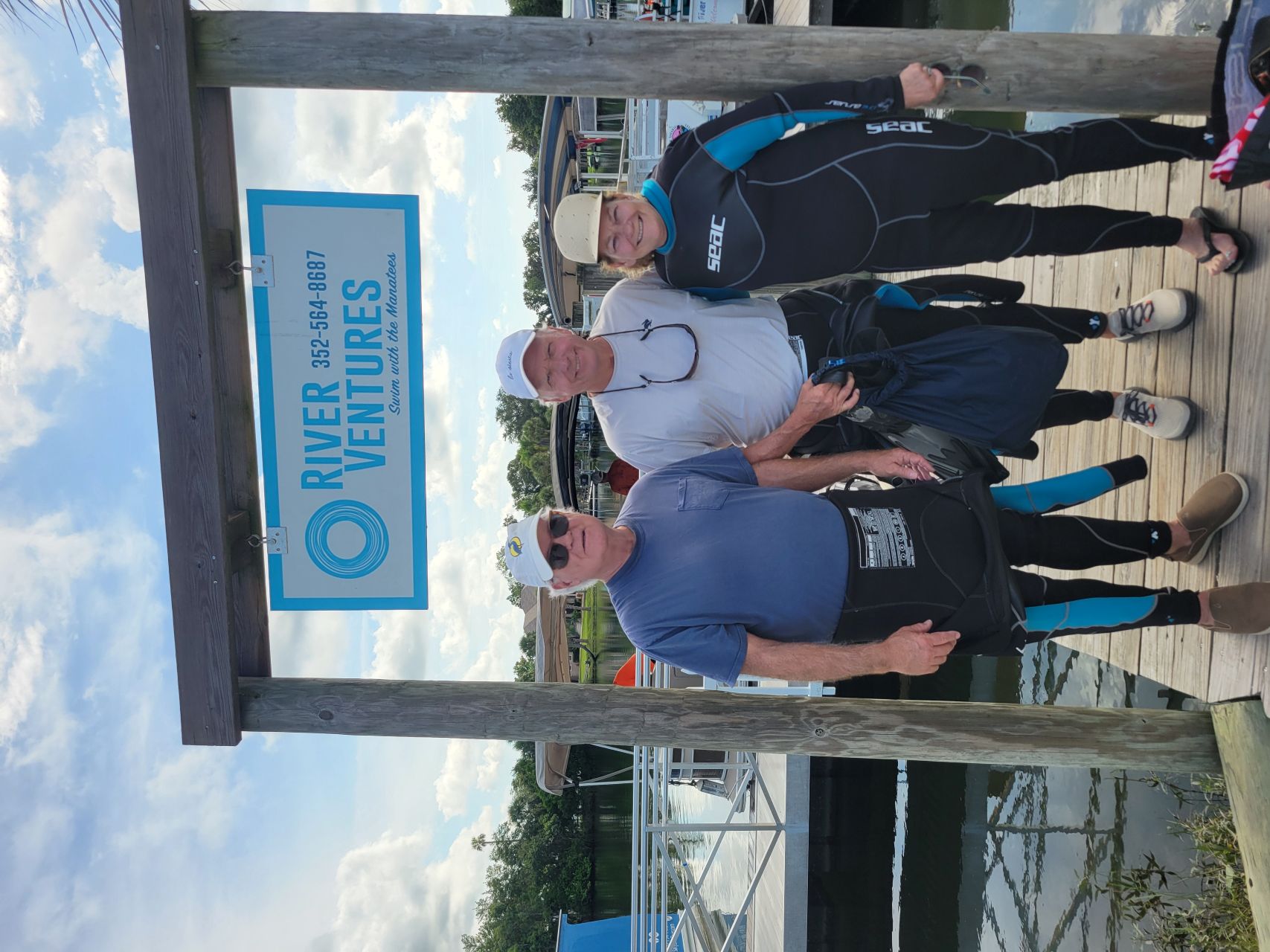
Bucket list items, a quick getaway, and time with friends were the motivations for a 4 day/3-night trip through the Big Bend area of Florida’s Forgotten Coast. I had been to Apalachicola a few times, but I had always wanted to explore the area further South. A seven-hour drive, Crystal River was our destination to swim with Manatees and dive for bay scallops.
Tony Atchison and I left Fairhope at 7 am, lost an hour with the time change, and arrived at Crystal River around 3 pm. We checked into our hotel, the Reserve at Crystal Manatee, a newly renovated small complex of clean, attractive rooms along a pathway of beautiful, well-kept native plants under Live Oak and Palm trees.
It is a short walk from Crystal River, and there, you can book excursions to fish, swim with manatees, or hunt for scallops in season.. This whole stretch of U.S. Highway 98 (sound familiar?) was once an overnight stopping point for those heading to Miami, a day's drive away, before the Interstate Highway system was built in the late 1950s.
With its eastern terminus at State Road A1A in Palm Beach, Florida, near Mar-a-Lago, US 98 is known for its scenic views of the Florida Panhandle before it reaches the Big Bend area around Perry, Florida. More recently, this area has been the landing point of three hurricanes. Last year, Hurricane Helene made landfall between Steinhatchee, Florida, and Cedar Key, Florida, about 70 miles south through Perry.
This area of The Forgotten Coast is made up primarily of coastal marshes, shell and sand barrier islands, with spring-fed rivers and bays. Crystal River is home to the largest population of manatees in the world. This time of year, the manatees branch out far and wide, even up to our Scenic 98 Coastal rivers and bays, but come winter, they return to the constant 72-degree springs that make up Crystal River.
The next morning, ready for our big adventure, we recharged with a great breakfast at The Biscuit Barn, an American-style diner.. The Biscuit Barn made us each a club sandwich to take on our Ultimate Voyage with River Ventures, to Scallop hunt, and Manatee swim. Wetsuits, masks, and snorkels were supplied for the manatee swim, and fins were provided for the scallop hunting later in the day.
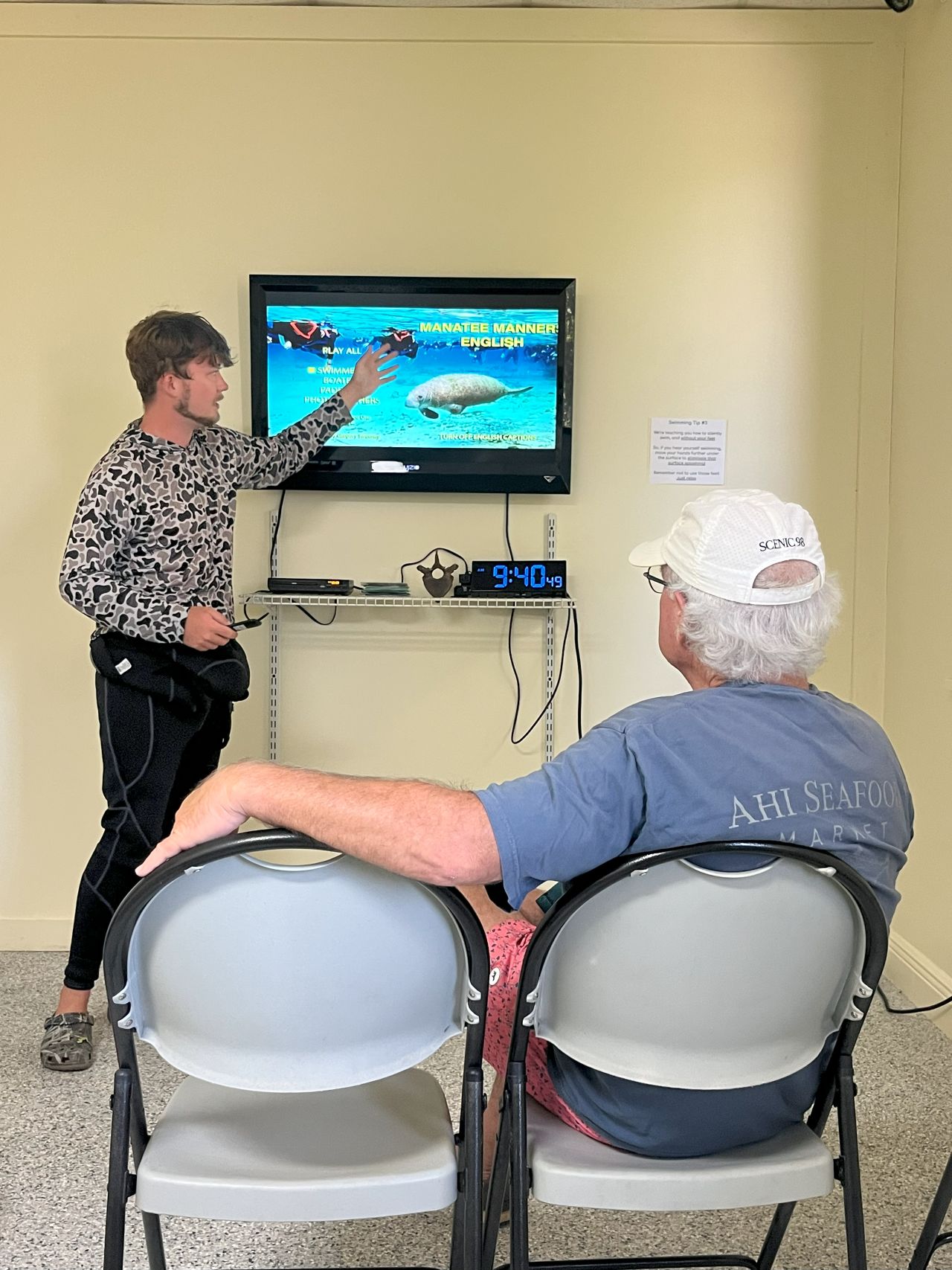
We left the dock at 9:45 and within 10 minutes, we were swimming with two large manatees. We were glad we had wetsuits on as we hovered over these large, docile creatures that lazily nibbled on grass beds and slept, occasionally surfacing for air. They were huge, I mean huge! Large mullet and other small fish swam with us, not seeming to be bothered by our presence.
After 30 minutes or so, we loaded back on the pontoon boat for the hour-long ride out into the Gulf to hunt for scallops. Each of River Ventures' 6 pontoon boats has a licensed captain and a guide who swims with you. The boats offer light snacks and an ice chest with water and a few libations, all included in the price of the excursion. There were only three guests on our boat, and the weather was perfect.
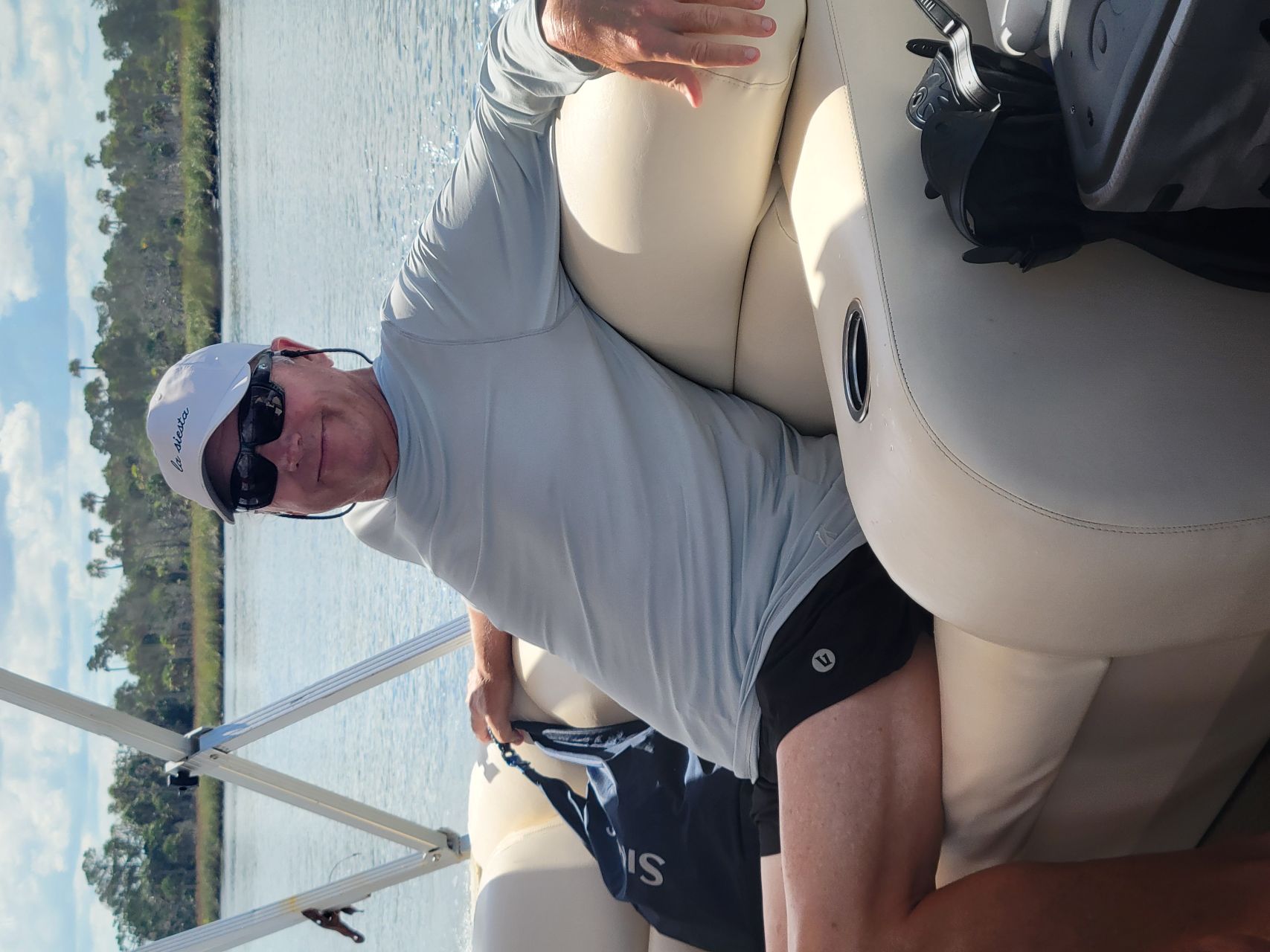
The boat ride itself was fun. Seeing the marsh along the river channel, which opened up to several barrier islands into the Gulf of Mexico, was beautiful. One shell island at the mouth of the river was made by Native Americans over 2400 years ago to serve as a navigation marker. The tide was running out, and the current was swift, and we saw a few fishermen along the way.
These waters in the Gulf are shallow and require local knowledge to navigate safely. After an hour, we anchored and tried our luck at a spot that had provided scallops earlier in the year. Our guide told us that it had been a good season so far. The scallop season runs from early July through late September, and recent rains meant we needed to venture farther out to clear, clean waters.
After about 15 minutes, we moved to another location where several other boats were anchored.. Dive flags are required so that boats stay a safe distance from other scallop hunters. In 6 to 8 feet of water, we used swim fins, masks, and snorkels (no wetsuit), swimming against the current to spot the bivalve mollusks. It took a minute to acclimate, but soon we knew what to look for.
As instructed, when we spotted a “bay” scallop, we took a breath and dived straight down to pick it up and place it in the small mesh bag strapped on our wrist. Finding a scallop was a bonus, because seeing the sunlight shimmering off the seagrass was so beautiful. Stephen, our guide, made sure we collected enough scallops for a meal and shucked the lot before we arrived back at the dock, sunburned and happy.
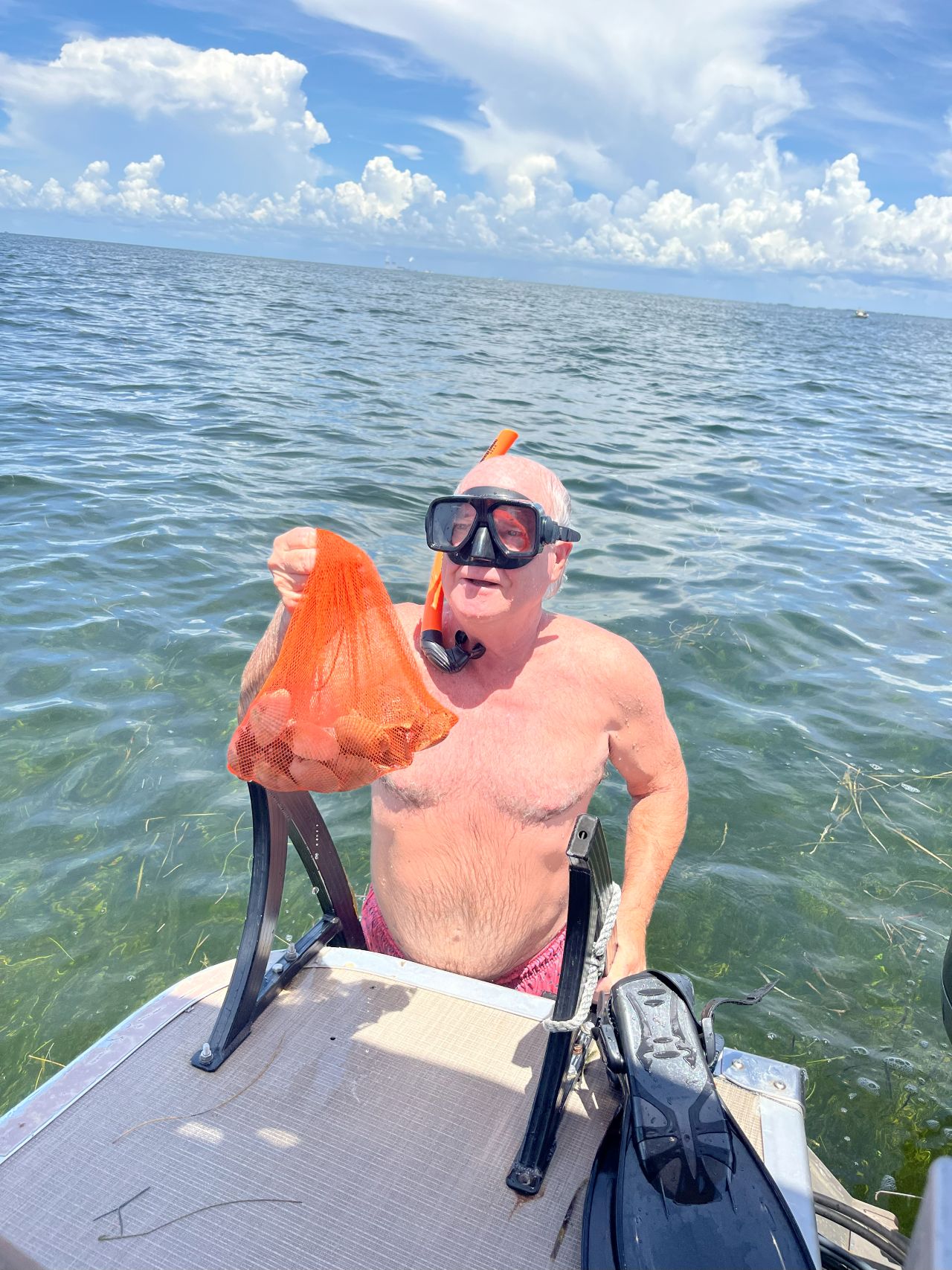
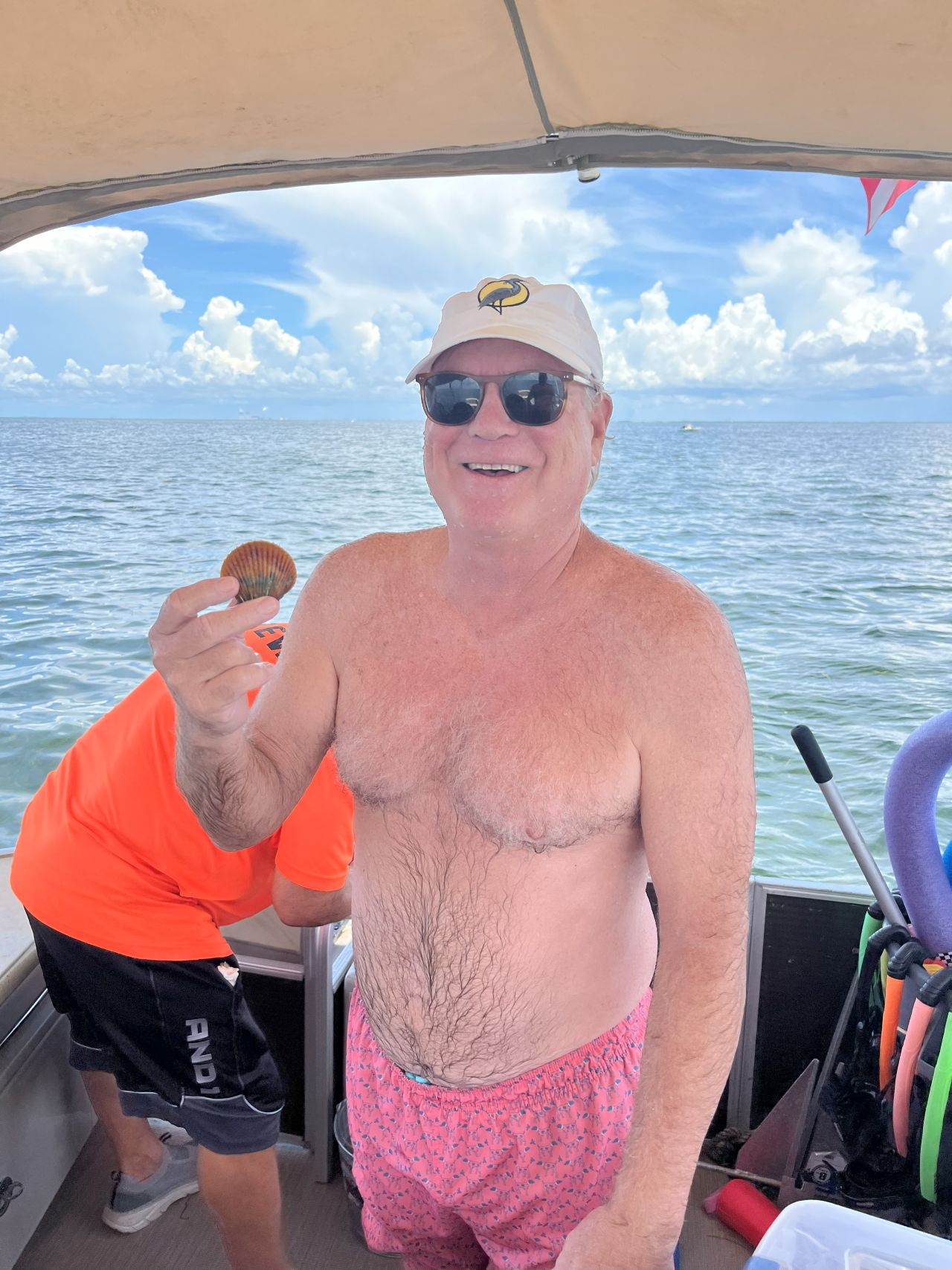
After our excursion, we drove down to Homosassa Springs for a cocktail at Crump’s Landing. About 7 miles south of Crystal River, this area is known for its first-magnitude spring system and wildlife park, a popular tourist destination. After an early dinner at St. Johns Tavern in Crystal River, a few blocks from our hotel, we called it a night.
The next morning, we loaded up and headed to Cedar Key, Florida. This is an island fishing community and home of the largest farm-raised clam operation. At one time, it was the largest pencil manufacturing plant in the world. It reminded us of Bayou La Batre. Several shops adorned the small town center, and we met several locals at a coffee shop.
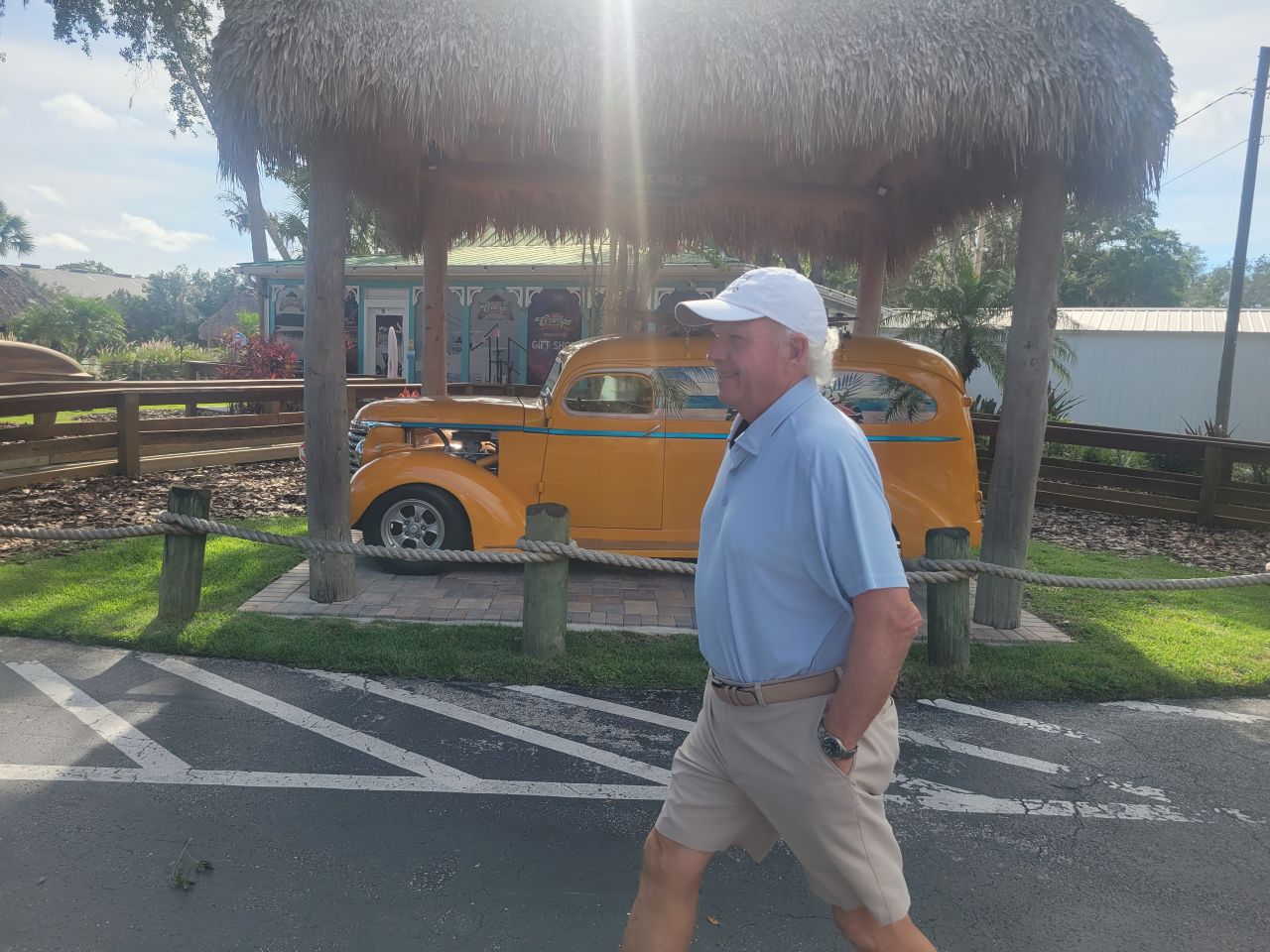
Evidence of Hurricane Helene, which destroyed waterfront properties 11 months earlier, was everywhere. A resilient bunch, one gift shop owner had a watermark stenciled on the front door, 5 feet above ground. She told us they loaded everything in U-Haul trailers and evacuated. These folks have seen enough hurricanes to know not to ride them out. “Live to see another day” is their motto.
From Cedar Key, we drove mostly through pine forest, live oaks, and native palm trees to Perry, Florida, and had lunch at Deal’s Famous Oysters restaurant. Established in 1961, it is known for its oysters, fresh fried mullet, and Swamp Cabbage. Fresh and regional, Swamp Cabbage is like an artichoke heart and comes from the heart of the Sabal Palmetto, also called the cabbage palm. You may have heard it referred to as “hearts of palm.”
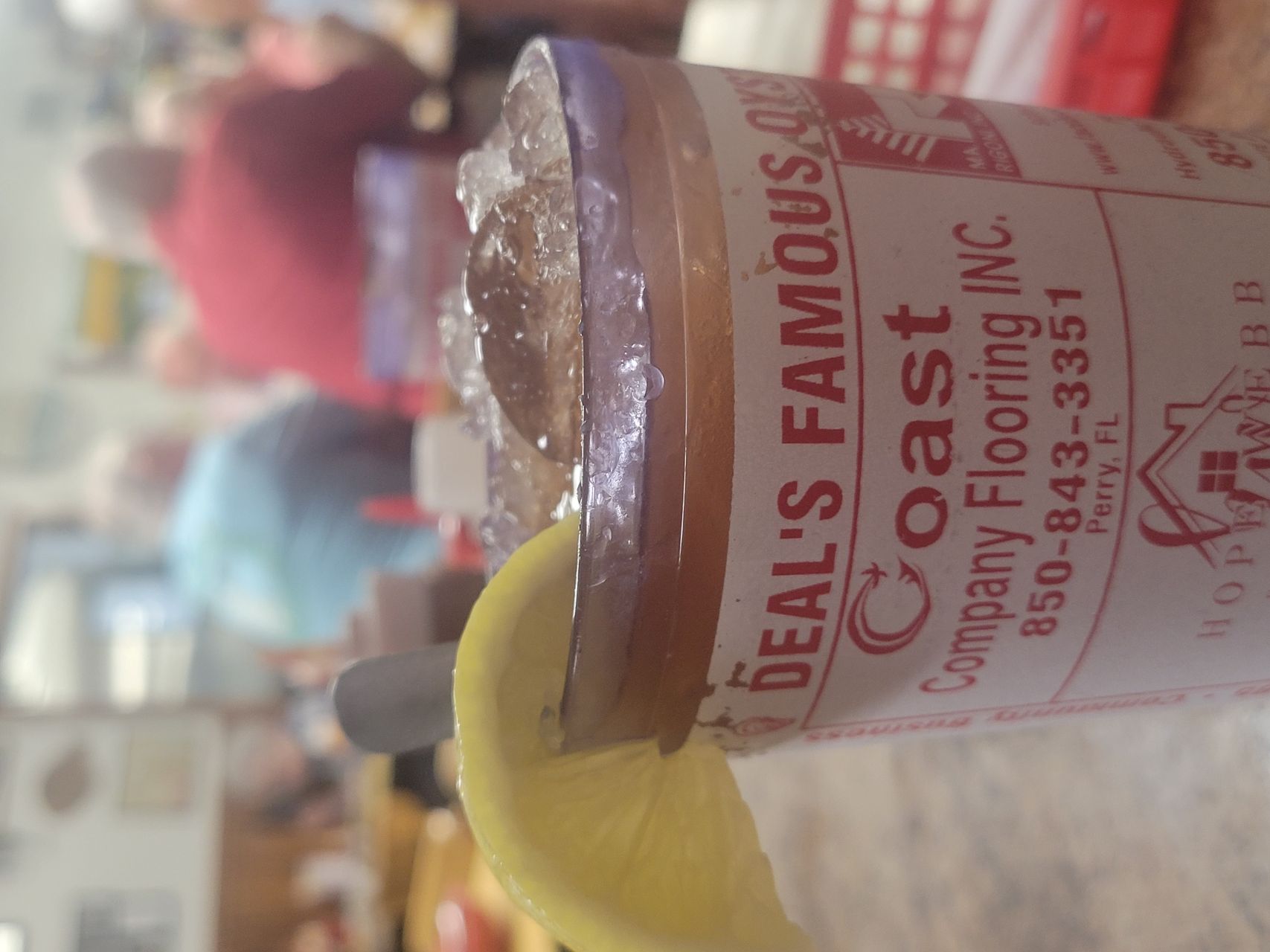
An hour west of Perry, US Highway 98 reaches the coastline of the Florida panhandle. It’s a gorgeous drive along the Gulf with white sand barrier islands, inlets, and bays. This is a remote part of the beach with only a few clusters of beach residents. As we continued our way to Apalachicola, we were taken by the beauty. We pass Alligator Point, Dog Island, Cape St. George Island, and St. Vincent Island.
The Gibson Inn in Apalachicola is our home for the evening. This historic hotel is a landmark and worth a visit. After checking out the shops, we spent some time in Apalach Outfitters, where we visited with a fly-fishing guide from Boca Grande, famous for its tarpon fishing. Our resident fishing guide was out of town, so we didn’t fish this trip. Instead, we made our way to the Apalachicola Yacht Club, a neat watering hole a few blocks from our hotel.
There, we met a couple from Panama City, Florida, celebrating their 32nd wedding anniversary. We enjoyed swapping tales and catching up on mutual acquaintances. They, too, were staying at The Gibson, so we saw them again later that evening. No trip to Apalachicola is complete without oysters. We split two dozen fried and Rockefeller at The Franklin Cafe, the Gibson Inn’s restaurant.
All in all, we had fun exploring the Forgotten Coast of Florida. This is old Florida, and if you are looking for ritz and glitz, this isn’t for you. These little, once thriving communities are not experiencing the growth that we see from Panama City, through 30-A, Destin, Gulf Breeze, Pensacola, Perdido Key/Orange Beach/Gulf Shores, and the Eastern Shore of Mobile Bay to Dauphin Island. I have a feeling they like it that way.
























